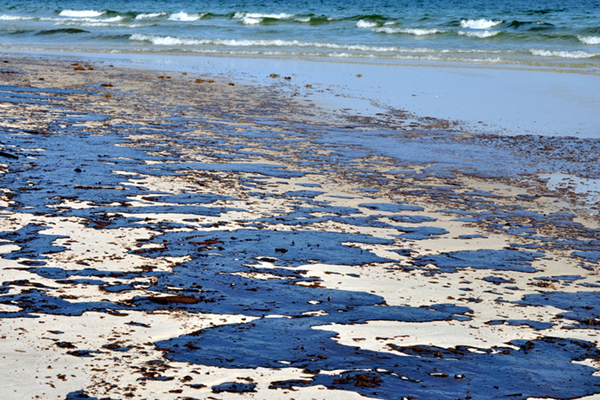- South Texas Students Meet Accordion Music Icons Los Tigres Del Norte In Edinburg Thanks To Khs America/Hohner Alianza Académica Initiative
- Fragile Planet Offers a Nighttime Wildlife Experience
- Falcons Soccer Off & Running
- Cameron County Receives Funds to Improve Two Parks
- Falcons Complete First Half of 32-6A
- School District to Help out Victims of California Wildfires
- Sand Castle Days Continued Despite Unexpected Weather
- Ready for District
- Discussion of Garbage Dumpster Rates, Agreements Between State & City on Highway Regulations, and More
- 31st Annual Shrimp Cook-Off is Right Around the Corner
Report: Gulf Restoration Should Focus on Coastal Areas
- Updated: April 21, 2017

Oil-soaked beaches were familiar sights on the Texas coast in 2010 after the Deepwater Horizon explosion. Photo: dehooks/iStockphoto
by Mark Richardson
GALVESTON, Texas – An explosion on the Deepwater Horizon drilling platform seven years ago released crude oil into the Gulf of Mexico for 87 days, the largest spill in U.S. history. A new National Wildlife Federation report outlines priorities for the $16 billion fund to restore coastal areas of Texas, Louisiana, Mississippi, Alabama and Florida.
Most of the money is from civil and criminal penalties paid by BP and other owners of the platform. Amanda Fuller, deputy director and Texas policy specialist for the federation’s Gulf of Mexico Restoration Program, said the goal now is to do restoration projects that get the most results for those dollars.
“Our game plan is to do our best to direct those funds by working with partners and coalition members across the gulf,” she said, “and also with decision-makers to really invest those wisely in projects that could do the most good.”
The report’s recommendations for the fund prioritize restoring coastal wetlands, river flows, barrier islands and oyster reefs. Texas will receive about $37 million a year, paid out annually through 2031.
Fuller said projects recommended for Texas are aimed at restoring the waters flowing into San Antonio, Matagorda and Galveston bays.
“In Texas, we focus on two main types of restoration: hydrological restoration or freshwater inflows, and we also look at land acquisition,” she said. “Both of these are on the more simple side to implement, because they don’t really require a lot of dirt-turning.”
Ryan Fikes, a staff scientist with the Gulf Restoration Project, said any programs adopted for coastal areas should primarily focus on repairing and restoring the ecology.
“All of these projects, and kind of restoration decision-making in general, really needs to be built on sound science,” he said. “That’s really evident in the way that we’ve gone in and assessed each of the systems and selected projects that really help get at the underlying stressors.”
According to the federation, the decades-long project will be the “largest restoration effort in U.S. history.” Its report described 50 projects it believes will make a major difference in the future health of the Gulf of Mexico.
The report is online at gulfrestoration.nwf.org.
